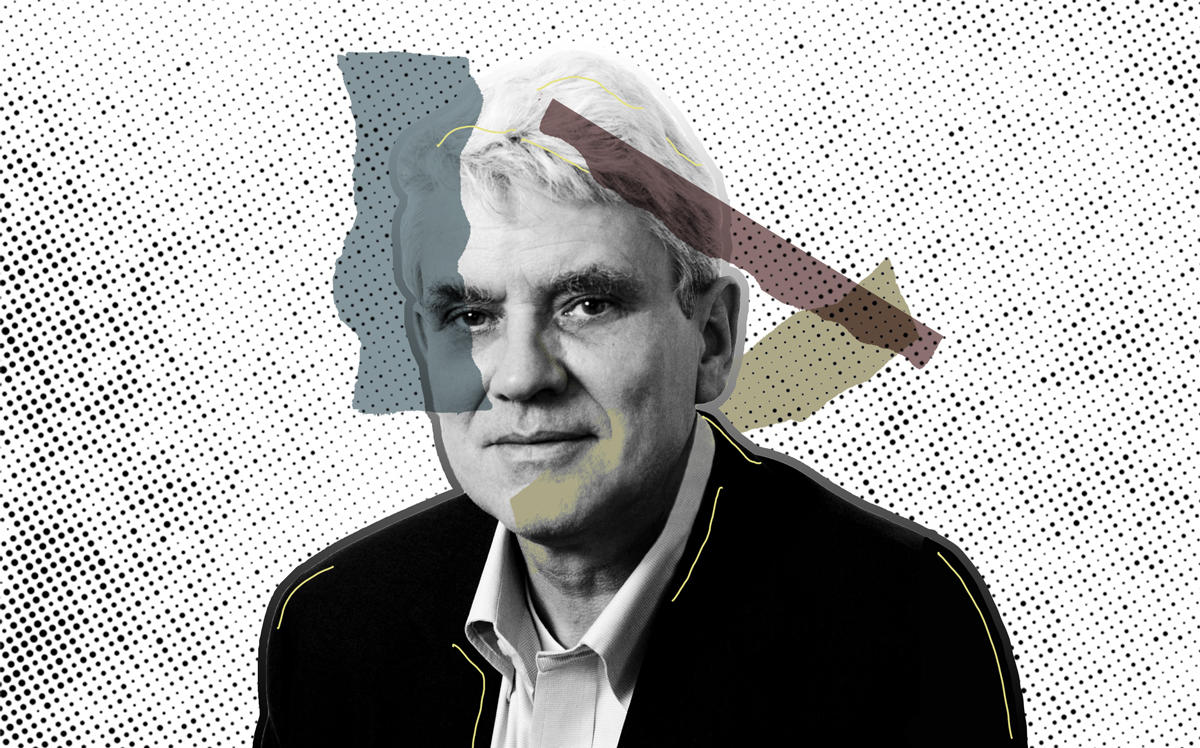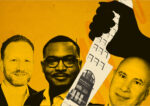Trending
After #MeToo: The new head of Richard Meier’s architecture firm on moving forward
“People still come to us, believe it or not,” architecture firm’s new boss says in wake of #MeToo scandal

UPDATED, Feb. 6, 6:23 p.m.: Richard Meier’s influence is still apparent when walking into the office of his eponymous architecture firm. There’s no trace of decoration on the white walls — the Pritzker Prize-winner’s trademark color — and large windows flood the space with light.
After the New York Times reported last March that five women accused Meier of sexual misconduct, the designer took a leave of absence, which he later claimed was due to his health. Despite saying in September that he had no plans to retire, Meier officially stepped back from his leadership role last October, turning over the reins of the company he founded five decades ago. Bernhard Karpf, 63, was named the new managing principal of the firm.
Karpf joined Richard Meier & Partners in 1988, fresh off a masters at Cornell University’s architecture school. Over the course of three decades, the native of Germany rose to the firm’s senior management and had been one of the principal design partners before taking the top job. He says he will run the firm from New York along with newly-promoted principals, Vivian Lee, Reynolds Logan and Dukho Yeon. The Los Angeles office will continue to be led by Michael Palladino and Jim Crawford.
Karpf clarified (after publication) that Meier has not left the firm. “Stepping back does not mean that he is gone,” he wrote in an email, adding that Meier “is in the office one to two days a week on average, and continues to interact with the staff and clients.”
Last week, The Real Deal sat down with Karpf in an airy conference room in the firm’s all-white office — “what else?” he said — to talk about the firm’s next chapter.
Have the allegations against Richard impacted your ability attract new clients?
People still come to us, believe it or not. That was our biggest worry, that with the story that clients would walk away, no one would call us anymore. Interestingly enough, that wasn’t the case. They knew what they were getting. They were invested. They appreciate the collaboration. People came, and said, “Can you do a project for us?” Which I find amazing. If you change the name of an established outfit, you’d better have something that is better, right? Or, different in the sense that it’s a different message. I don’t think there is a different message. It is the same operation that has been around for 50 years that’s been doing all the work — the great work that you see. I wouldn’t even know what to call this place. If you have any brilliant idea, let us know.
Tell us about the transition now that you are at the helm.
To me, it’s not really a transition. We want it to be known that we [the four principals] are the same people. We have the same name. We continue on. We’ve done great buildings, over the last 55 years, and it was always a team effort. It was always the office that put that all together, and I think [there’s] a perception [that] there’s this one person who did it all. I think it was wrong in the past and it’s wrong now. Maybe this is a little bit of an adjustment to the reality — that no office of any size is just a one-person operation. There is a vision that comes from the founder of the firm — that’s clear; that’s understood. But, for us, it’s a vision that we all embraced years ago.
Elaborate on that common vision.
I would call it a spiritual quality that we have. We all believe in the same things. Open spaces, light… you know, elegance, minimalism, all that.
Why not change the name of the firm then?
You can imagine it has been debated extensively for the last number of months. I mean, we all have an immediate reaction to that. “Change the name, and everything’s going to be good.” But there is something associated with that name that clients respond to extremely well. For them, Richard Meier & Partners Architects is an established name. For us to change that, in reaction to whatever has happened over the last number of months, just doesn’t feel right. It may change in the future. I don’t know. But for right now, I think we’re good. It works.
What was your reaction to the allegations?
It was a difficult time. Let’s put it that way. But what helped us — and the reason why we’re still here — is because we had something that was important to us. If you spend 30 years, almost your entire professional life, there is something that you have, that you created yourself and you’re not walking away from that easily. You contemplate what it all means and then you come to the conclusion this is worth keeping.
You’ve been with Richard for so long. Were you surprised by the allegations?
I don’t know. I don’t really know. See, the thing is we could spend the rest of the morning discussing that. But to me, that’s last year’s news. This year’s news is we have to move forward. We’ve taken on the responsibility to move this place forward, and that, to me, is what matters. Everything else? You know as much as I do. Same thing. There’s nothing we can do about it.
In the immediate days after the story came out, what was it like here?
What do you think it was? What do you think it was, huh? I mean, come on. It’s not something that you want to have, right? But you have to deal with it.
How did you deal with it?
There are two options. Staying or leaving. Simple as that. Keep in mind for this, that we have been around, as I said, [for] 55 years, and have clients. I think one of the hardest [things] would have been to walk away from clients. Because those are the relationships you’ve created over the years. There’s one particular client that I’ve been working with for 15 years. We’re doing the fourth building for him. I can’t walk away from this. I can’t. Whatever the mess is, we’ll fix it. We’ll work on it. We acknowledge it, but there is more. There’s more to it, and I think that’s important. I would have felt horrible just to say to that client, “Sorry, man. Just ’cause of the situation, find yourself another architect.” We’re working with people. That I think, to me, that was more important.
Was Richard’s stepping back a big part of being able to continue?
Yeah, of course.
With your partners, how did you decide to fill this role? Was it an appointment?
How did I end up in this job? I wonder that on occasion, too. Why did I end up with this job? No, I think probably because I’m the oldest one here. I think we discussed it internally. The suggestion was made, why don’t you take the job? I said okay, fine. I can think about it, but I’ll only do it if my colleagues are on board with that. ‘Cause I’ve been working with them for a long time. Suddenly, you are supposed to manage them? That wouldn’t work, so we agreed, “Okay, there needs to be one person, a spokesperson, and but we’re all doing this together.” I think that’s key for you to know, that this is not about me.
What now? New projects? New directions?
Yeah, not necessarily new directions. We are happy with our productive past. With our 130 projects that we’ve built, over the years. There is a legacy. There is a philosophy that we bring to the architectural discussion. We will elaborate on that. We may have a reputation for a certain type of buildings. The luxury buildings. The white buildings.
Except for your first black building.
The brand is a white building, right? That’s all that has been communicated. Every time we try to explain, “No, it’s more than just a white building. It’s efficient. It’s sustainable.” I think it’s important to emphasize that the work we do is top-notch, when it comes to issues of sustainability, issues of technology, issues of economy. That’s important. Otherwise, you wouldn’t be able to compete, in the world. Right? If you can only create fancy temples to the rich, that’s not working long term.
How did that first black building, 685 First Avenue, happen? Sheldon Solow’s a longtime client, right?
I think he’s friends with Richard, and that’s how it happened. As far as I know the story, he approached Richard, probably somewhere in the Hamptons, and said “Richard, I’d like to work with you.” But because Solow only does black buildings, all his buildings are black, [he said] “Can you do a black building for us?” Richard, I don’t know how long it took him, but he said, “Sure, why not.” It actually turned out to be a brilliant marketing strategy.
Do you still talk to Richard?
Sure. Yes. Why not? He’s alive. He’s around.
Editor’s Note: After this interview was published, a representative for the firm contested the characterization of Meier’s involvement. This was contradictory to the firm’s October announcement of a leadership transition. Karpf then clarified the extent of Meier’s ongoing presence at the firm.




